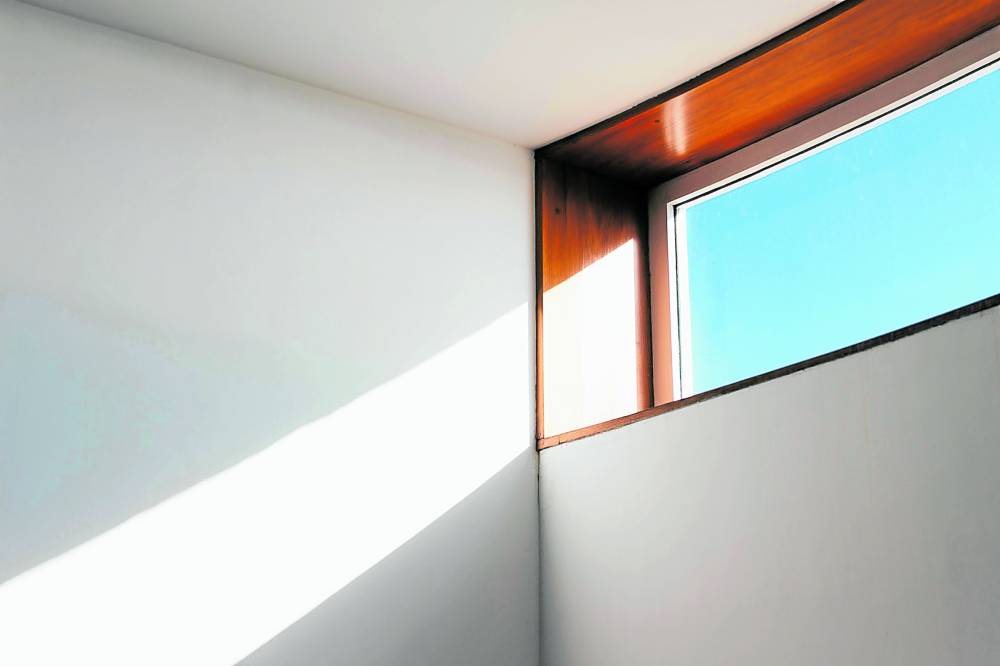
Bricks, concrete and earth are just some materials that serve as natural insulation (Steve Johnson via pexels.com)
Summer has never been as dangerous as this year’s edition.
The Philippine Atmospheric, Geophysical, and Astronomical Services Administration (Pagasa) recently reported that four provinces in the Philippines were due to experience a heat index of 42 degrees Celsius and above. Classes in several schools in Mindanao were also suspended in early April due to extreme heat.
Besides the nuisance of constant sweat and thirst, high heat conditions can impair bodily functions by straining the heart and kidneys, disrupting sleep, and causing headaches. Worst, the body can experience heat stroke, which can cause permanent damage to the organs or even death.
So, as a matter of life and death, it’s important to cool down. And while drinks and loose clothes make us feel comfortable, a cool environment can also help us avoid heat and life-threatening maladies altogether. But if you have no airconditioner in the house and can’t head to the mall on hot days, there’s no need to fret. There are several ways to make your home cool this summer without breaking the bank.
Grab a cold, cold glass of ice water and get ready to learn how you can summer-proof your home today.

Clerestory windows bring in natural light and, if operable, help chase out hot air. (João Jesus via pexels.com)
Check your home’s orientation
Before you buy or install anything, check the direction your room or house is facing. Remember that the sun rises in the east, moves to the south during noon, and sets in the west before nighttime.
The direction your home faces dictates when it will receive sunlight. North-facing rooms don’t get any direct sunlight, but they do receive soft daylight throughout the day. Ideally, kitchens and dining rooms face the east, so you have some morning sunshine to accompany your breakfast at the start of the day. Living areas are ideally located in the north. Bedrooms can be positioned in the east or south to avoid the harsh afternoon sun, while bathrooms and utility rooms can be placed in the west to serve as buffers between the sun and other rooms in the afternoons.
When it comes to the wind, the prevailing direction is northeast from November to February and southwest from July to September. Window openings are best oriented along these directions to allow cooling winds to enter your home.
Cooling materials such as cotton allow moisture and air to flow freely through them. (Jill Burrow via pexels.com)
Install shading devices
While properly orienting your home is great during house planning, it’s not always possible. Thankfully, there are ways to mitigate heat. You can install awnings, shutters, or brise soleil to minimize the direct sunlight entering your home. Take note that these shading devices have to be properly oriented to block the direction of sunlight. It’s best to ask an architect how to orient these shades to maximize their benefits for your home.
Besides shades, you can also plant vegetation to obstruct light. Creeping vines can do wonders on your windows, aesthetically and functionally. Keep in mind, though, that these plants take a while to grow, require regular maintenance, and may harbor some insects.
Practice cross ventilation
It’s important as well to design your home to maximize wind flow. Ideally, openings are located on two sides in each room. Wind enters on one side and exits through the other. If windows are only positioned on one wall, you’ll need to install mechanical devices such as electric fans to force the wind to flow throughout the room.
Wind temperature can also be regulated. Generally speaking, hot air rises while cold air sinks. So if you want to drive out the hot air from your home, it would help to install clerestory windows, ventanillas, and even ceiling vents that lead outside. For basements and window-free rooms, consider adding a wind tunnel or tower that can regularly supply fresh air.
Scientific principles are behind cross ventilation, so to ensure its effectiveness, do consult an architect or a mechanical engineer for guidance.
Go for brighter room colors
Do you ever wonder why black-colored rooms feel hot and restrictive? That’s because dark colors absorb much of the sun’s heat, while light colors deflect most of it away. You can easily test this color theory by switching between dark and light colored umbrellas on a summer day.
So if you want a naturally cool room, opt for light colors (or white for best results) when it comes to your exterior and interior paints. Not only will this lower the temperature, but the light shade will also provide a visual expanding effect to your sanctuary. Your room will feel larger and brighter, making it more comfortable for you.
Change materials
For a more permanent solution, consider installing insulating materials to help lower your home’s internal temperatures. Insulation is available for your roof, walls, and ceiling systems. Some common insulating devices are glasswool, rockwool, aluminum bubble insulation, and polyethylene foam.
Stone, concrete, and earth homes are often naturally cool, as these materials absorb heat well and release it gradually at night. If you’re in the process of renovating your home, consider using these materials or even going below ground.
Lastly, even the smallest changes can make the biggest difference. Switching your curtains and bed sheets from synthetic materials to cotton can help your home be more comfortable in the summer. Compared to other fabrics, cotton allows air and moisture to move more freely through it, preventing you from suffering in heat and sweat all day.
Overall, summer can be an uncomfortable season due to high heat, but you don’t have to buy a new airconditioner just yet. Consider passive ways of cooling down first to make your home more bearable under the hot sun.

